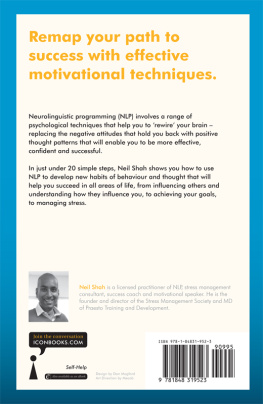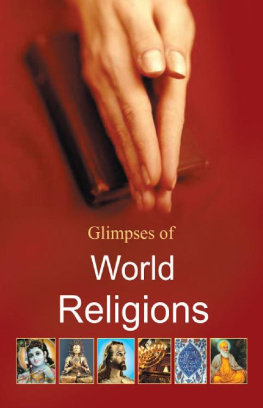T HE D ERMIS P ROBE
Books by Idries Shah
Sufi Studies and Middle Eastern Literature
The Sufis
Caravan of Dreams
The Way of the Sufi
Tales of the Dervishes: Teaching-stories Over a
Thousand Years
Sufi Thought and Action
Traditional Psychology,
Teaching Encounters and Narratives
Thinkers of the East: Studies in Experientialism
Wisdom of the Idiots
The Dermis Probe
Learning How to Learn: Psychology and Spirituality
in the Sufi Way
Knowing How to Know
The Magic Monastery: Analogical and Action Philosophy
Seeker After Truth
Observations
Evenings with Idries Shah
The Commanding Self
University Lectures
A Perfumed Scorpion (Institute for the Study of
Human Knowledge and California University)
Special Problems in the Study of Sufi Ideas
(Sussex University)
The Elephant in the Dark: Christianity,
Islam and the Sufis (Geneva University)
Neglected Aspects of Sufi Study: Beginning to Begin
(The New School for Social Research)
Letters and Lectures of Idries Shah
Current and Traditional Ideas
Reflections
The Book of the Book
A Veiled Gazelle: Seeing How to See
Special Illumination: The Sufi Use of Humor
The Mulla Nasrudin Corpus
The Pleasantries of the Incredible Mulla Nasrudin
The Subtleties of the Inimitable Mulla Nasrudin
The Exploits of the Incomparable Mulla Nasrudin
The World of Nasrudin
Travel and Exploration
Destination Mecca
Studies in Minority Beliefs
The Secret Lore of Magic
Oriental Magic
Selected Folktales and Their Background
World Tales
A Novel
Kara Kush
Sociological Works
Darkest England
The Natives Are Restless
The Englishmans Handbook
Translated by Idries Shah
The Hundred Tales of Wisdom (Aflakis Munaqib)
T HE D ERMIS P ROBE
Idries Shah

Copyright The Estate of Idries Shah
The right of the Estate of Idries Shah to be identified as the owner of this work has been asserted by them in accordance with the Copyright, Designs and Patents Act 1988.
All rights reserved
Copyright throughout the world
ISBN 978-1-78479-053-0 (ePub)
First Published 1970
Published in this edition 2016
No part of this publication may be reproduced or transmitted in any form or by any means, electronic, mechanical or photographic, by recording or any information storage or retrieval system or method now known or to be invented or adapted, without prior permission obtained in writing from the publisher, ISF Publishing, except by a reviewer quoting brief passages in a review written for inclusion in a journal, magazine, newspaper, blog or broadcast.
Requests for permission to reprint, reproduce etc., to:
The Permissions Department
ISF Publishing
The Idries Shah Foundation
P. O. Box 71911 London NW2 9QA
United Kingdom
In association with The Idries Shah Foundation
The Idries Shah Foundation is a registered charity in the United Kingdom Charity No. 1150876
Contents
Preface
GOLDFISH
A man once wanted to observe goldfish. His aim was to see whether some of their peculiarities could help scientists to understand certain human nervous conditions.
He found a patron to support the work and traveled to a far country to carry out his research.
Soon after he started his goldfish-watching, however, the authorities discovered that he lacked the necessary licenses and certificates. By watching goldfish he had broken the law.
Although a university graduate and an expert on the psychology of fish, this man was unaware of the local regulations and the mentality of those who made and interpreted them.
In this book you can find illustrated some of the peculiarities of thought in the country which is todays world, seen by its inhabitants and by those who call themselves visitors.
If you think, incidentally, that a scientist is allowed to watch goldfish without permission, read the Report of the Home Office under the Cruelty to Animals Act, published in 1968, where the offense is officially recorded.
Institute for Cultural Research,
P.O. Box 13, Tunbridge Wells, Kent | Idries Shah |
|---|
The Dermis Probe
O VER EIGHT HUNDRED years ago, the philosopher Hakim Majdud Sanai of Ghazna (Afghanistan), in his Walled Garden of Truth, published this tale in a form corresponding to the needs of his time. His pupil and fellow-countryman, Jalaludin Rumi, immortalized his version in the incomparable Mathnavi, toward the end of the thirteenth century. In 1965 this adaptation was filmed by the celebrated producer-director Richard Williams on the basis of a twentieth-century version by Idries Shah.
The film won a citation as an Outstanding Film of the Year, being chosen for exhibition at the London and New York Film Festivals.
T HE D ERMIS P ROBE
The prizewinning film by Richard Williams
Script by
Idries Shah
from a story by J. D. Rumi of Konia
after H. M. Sanai, of
Ghazna
The Dermis Probe
M EMBERS OF THE Commission of World Scientists gaze at a bewildering sight, brought to us by television, using cameras equipped with close-up lenses of inordinate power.
The picture pans across a greyish, striated surface, a vista of solid in space, broken here and there by fissures, sometimes curving, sometimes obscured by flat shadows. Nothing moves, nothing grows on the barren area. The harsh roughness of the sight hints at a silent, empty mass, an outer skin as of a larva or a pachyderm, gnarled as though with immemorial age.
As we watch, the American commentators voice sets the scene of this documentary report:
From the beginning of time, man has consistently and untiringly explored his environment, he has striven to extend the threshold of his knowledge, even driving probes deep into outer space
The British voice of the Chairman of the Commission is now heard, as the pictures of the object alternate, the angles varying, to give as complete a view as possible of the intimidating, silent bulk:
What we are considering here is the, er, topography of the outer husk, as it were, the skin of the, er, bulk of a mass whose characteristics are
Now fades in the matter-of-fact report of the laboratory astrophysicist, giving a fragment of his results:
Microscopic sections of this undoubtedly organic material betray a cellular structure strikingly akin to Dermic tissue.
The viewers can hear sounds corresponding with the laboratory operation. The astrophysicist continues:
Staining the section with Von Glaubens Fluid
He is interrupted, for this is a democratic discussion.
The German Scientists rejoinder is clearly heard:
Von Glaubens Fluid? May I point out that this was found to be a totally arbitrary method in early nineteen hundred and sixty-three, when it was superseded by Kauffer and Blakmanns Traumatic Method. It is totally out of date.
The Chairman, like all good chairmen, switches the discussion to bring in another constructive scientist:













